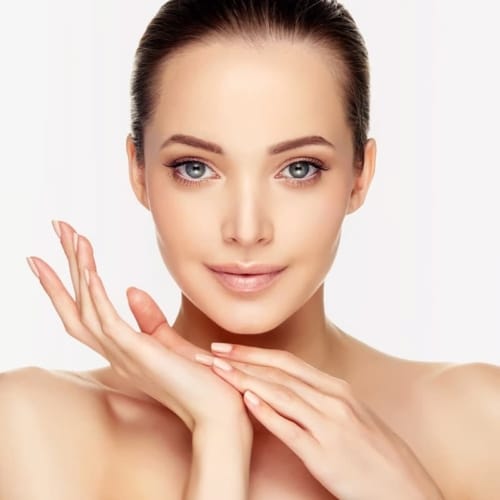Let’s start from balance of skin flora to nourish healthy skin!
Do you know that the microbiome could naturally nourish your skin?
Since 1996, with the rise of molecular biology and next-generation sequencing (NGS), skin microbiome research has gradually increased. The industry’s concept of skin microbiology has also changed from “as long as good bacteria are left; the skin will become better” to “the balance of skin flora is one of the keys to maintaining skin health. “ For example, people used to think Cutibacterium acnes would cause acne, so we need to eliminate it. However, in 2020, a study by BASF pointed out that Staphylococcus epidermidis and Cutibacterium acnes have a vital role in the skin ecosystem. They protect and prevent microbiota disequilibrium by fighting pathogens. We must focus on balancing skin microbiota and improving skin conditions.
When balance skin microbiota becomes more mainstream, how could we design products that follow this trend? This article will take you to decipher the latest research information!
Source: UNICARE
Choose the right solution for skin problems
Affected by various factors such as age, gender, lifestyle, and environment, each of us has different skin microflora. It isn’t easy to make a simple classification. Therefore, the related research mainly focuses on how to solve related skin problems through diverse flora.
For dry and itchy skin
Added Bifida Ferment Lysate to soothe skin
Currently, the most mainstream ingredient for the skin microbiome is Bifida Ferment Lysate. But Bifida Ferment Lysate is not yeast. It is a type of probiotic obtained by Bifidobacterium. Studies have shown that Bifidobacterium can enhance skin barrier function. Due to Bifida Ferment, Lysate’s vital repairing has become one of luxury skincare brands’ preferred skin microbiome conceptual ingredients.
For oily and acne-prone skin
Added Lactococcus sp, which controls the growth of P. acnes
Excess sebum production will accelerate the proliferation of acne bacillus, which induces acne. Oh, et al. (2006) found that Lactococcus sp can indirectly inhibit the formation of P. acnes. The inhibitory effect of the bacteriocin produced by Lactococcus sp. inhibited the growth of selected bacteria efficiently. Neither any irritations nor allergic reactions in a human patch test. It can be regarded as a gentler and more effective way to care for oily skin.
For uneven skin tone
Added Lactobacillus ferment which enhances skin radiance
Most skin microbiota products focus on repairing as the main product appeal. Therefore, Unicare developed UNICARE109 – carefully selected beautifying bacteria for fermentation. It has been tested by the Taiwan Medical and Pharmaceutical Industry Technology and Development Center as “a whitening, anti-aging, and safe lactobacillus fermentation product. “ It provides new ideas for positioning functional skin microbiota care products.
For fine lines and wrinkles
Added Nitrosomonas eutropha which can slow down skin aging
Dullness and fine lines are signs of skin aging. In recent years, studies have focused on whitening and anti-aging effects to explore whether the flora can provide skincare assistance. The research found that Nitrosomonas eutropha can improve the softness and lighten fine lines in 7 days. This finding also makes skin microbiota more diverse in the choice of product efficacy.
Source: UNICARE
The most important thing to balance skin microbiota is to select the post-bacteria for specific skin conditions with the right postbiotic ingredients. It will double the effectiveness of balancing skin microbiota! This way, we can help consumers solve their skin problems from the inside out.
Fournière, Mathilde, et al. “Staphylococcus epidermidis and Cutibacterium acnes: Two major sentinels of skin microbiota and the influence of cosmetics.” Microorganisms 8.11 (2020): 1752.
Lee, Hyo Jung, et al. “Effects of cosmetics on the skin microbiome of facial cheeks with different hydration levels.” Microbiologyopen 7.2 (2018): e00557.
Shibagaki, Nakako, et al. “Aging-related changes in the diversity of women’s skin microbiomes associated with oral bacteria.” Scientific reports 7.1 (2017): 1-10.
Kim, Hye-Jin, et al. “Segregation of age-related skin microbiome characteristics by functionality.” Scientific reports 9.1 (2019): 1-11.
Beri, Kavita. “Skin microbiome & host immunity: applications in regenerative cosmetics & transdermal drug delivery.” Future Science OA 4.6 (2018): FSO302. Boxberger, Manon, et al. “Challenges in exploring and manipulating the human skin microbiome.” Microbiome 9.1 (2021): 1-14.
Puebla-Barragan, Scarlett, and Gregor Reid. “Probiotics in cosmetic and personal care products: Trends and challenges.” Molecules 26.5 (2021): 1249.
Guéniche, Audrey, et al. “Bifidobacterium longum lysate, a new ingredient for reactive skin.” Experimental dermatology 19.8 (2010): e1-e8.
Goodarzi, Azadeh, et al. “The potential of probiotics for treating acne vulgaris: A review of literature on acne and microbiota.” Dermatologic therapy 33.3 (2020): e13279.
Oh, Sejong, et al. “Effect of bacteriocin produced by Lactococcus sp. HY 449 on skin-inflammatory bacteria.” Food and chemical toxicology 44.4 (2006): 552-559.
Notay, Manisha, et al. “The use of topical Nitrosomonas eutropha for cosmetic improvement of facial wrinkles.” Journal of Cosmetic Dermatology 19.3 (2020): 689-693.





